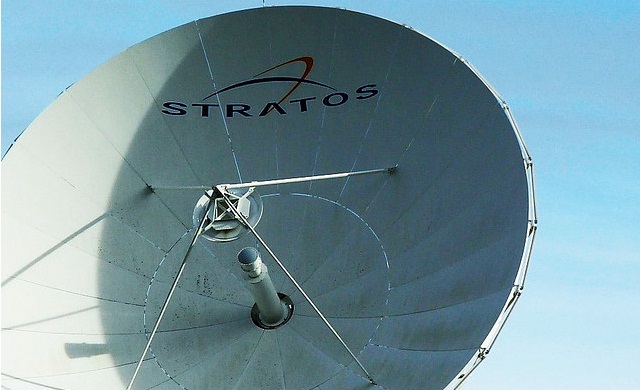Decentralized Exchanges (DEXs) have emerged as a transformative force in the cryptocurrency landscape. Their rise, however, coincides with a period of intense regulatory scrutiny and evolving market dynamics. This article delves into the key trends shaping the DEX ecosystem, exploring how platforms like Uniswap are navigating the challenges posed by regulatory bodies like the SEC while simultaneously adapting to market events like the USDC de-peg. We’ll also analyze the growth trajectory of DEX trading volumes, exemplified by Uniswap’s impressive Q1 2024 figures, and examine the ongoing challenges faced by Curve Finance, a prominent player in the liquidity aggregation space.
Decentralized Exchanges (DEXs) have become a cornerstone of the cryptocurrency ecosystem, offering a distinct alternative to traditional centralized exchanges (CEXs). Unlike CEXs, which operate as intermediaries holding user funds, DEXs leverage blockchain technology and smart contracts to facilitate peer-to-peer (P2P) trading. This
translates to several key advantages:

DEXs offer increased security by eliminating the need for a central custodian, thereby reducing the risk of exchange hacks and wallet breaches—a major concern for CEX users. They provide transparency and control, as all transactions are publicly recorded on the blockchain, allowing users greater oversight of their funds. Additionally, DEXs typically operate without Know Your Customer (KYC) or Anti-Money Laundering (AML) requirements, promoting broader accessibility for users worldwide.
Evolution of a Disruptive Force
The concept of DEXs emerged in the early days of cryptocurrencies, with rudimentary platforms like Bitcoin Trader appearing in 2014. However, these early iterations were plagued by limitations such as low liquidity and complex user interfaces.
The landscape began to shift in 2016 with the introduction of Ethereum and its smart contract capabilities. This paved the way for the development of more advanced DEX models like Uniswap and Kyber Network, which utilized Automated Market Makers (AMMs) to address liquidity issues. AMMs rely on liquidity pools created by users who deposit their crypto holdings, facilitating automated trading without the need for order books.

Today, DEXs continue to evolve, offering a wider range of functionalities beyond simple token swaps. These include margin trading, which enables users to leverage their positions for potentially amplified returns and risks; yield farming, offering opportunities to earn rewards by supplying liquidity to DEX protocols; and decentralized governance, allowing token holders to participate in platform decision-making through on-chain voting mechanisms.
The Rising Trading Volume
Decentralized exchanges (DEXs) are experiencing a resurgence in trading activity, with volumes climbing steadily after a period of relative stasis. While market fluctuations have historically triggered temporary surges, DEXs spent much of last year in a lull, averaging a modest $15 billion in monthly trades. However, a significant shift has occurred since October. Uniswap, a leading DEX, has witnessed a dramatic leap, recording a quarterly volume of $54 billion in Q4 2023 and a staggering $84 billion in Q1 2024. Curve Finance, another major player, is also showing signs of recovery, although its trading volume hasn’t yet reached the pre-March 2023 USDC de-peg highs. This recent surge suggests a renewed interest in DEXs and highlights their potential to become a more prominent force within the cryptocurrency ecosystem.
Uniswap: King of DEX Liquidity
Uniswap, the largest decentralized exchange by volume, has facilitated over $2 trillion in transactions and is pivotal to the decentralized finance (DeFi) sector’s growth. Each iteration of its protocol has enhanced its liquidity provision model.
Uniswap v2, introduced in 2020, provided a foundational AMM platform with a constant product invariant (x * y = k). This version enabled token swaps by ensuring liquidity in less active markets and allowing for the permissionless creation of markets, fostering a diverse range of token pairs. While Uniswap v3 sees higher trading volumes, Uniswap v2 boasts a greater number of trades in several pools, benefiting newly-listed tokens and passive liquidity providers. However, challenges like vulnerability to maximal extractable value (MEV), reduced capital efficiency, and the potential for impermanent loss remain.
Curve: Liquidity Wanes, Utilization Surges
Like Uniswap, Curve Finance is an AMM-based decentralized exchange (DEX) focused on assets of similar value. Before Uniswap v3 introduced concentrated liquidity, stablecoins often faced liquidity issues, resulting in low fees for liquidity providers (LPs). Launched in 2020, Curve addressed these challenges with its StableSwap AMM, combining the constant sum invariant (x + y = k) with Uniswap’s constant product invariant (x * y = k). This enabled low-slippage swaps between stablecoins, wrapped assets, and liquid staking tokens (LSTs), emphasizing deep liquidity in narrow price ranges.
Curve’s total value locked (TVL) soared to over $15 billion in 2021, but liquidity decreased following de-pegging incidents and an exploit in 2023. Currently, ETH (26%), stETH (26%), and stablecoins (32%) dominate Curve’s liquidity. The largest pool on Curve is the stETH/ETH pool, which peaked at $6 billion in early 2022. However, stETH’s de-pegging in May 2022 and the introduction of withdrawals have dispersed liquidity to other AMMs and centralized exchanges (CEXs). Today, the stETH/ETH pool holds around $220 million.
Conclusion
The rise of DEXs signifies a significant shift towards a more decentralized and user-centric financial future. As the technology matures and regulatory frameworks adapt, DEXs are poised to play an increasingly prominent role in the global financial landscape. Uniswap and Curve Finance showcase DeFi’s progress in liquidity and trading. These advancements attract diverse traders and point to a thriving future for DEXs, where ease of use and efficiency fuel wider crypto adoption.
Learn from market wizards: Books to take your trading to the next level.


 Hot Features
Hot Features












